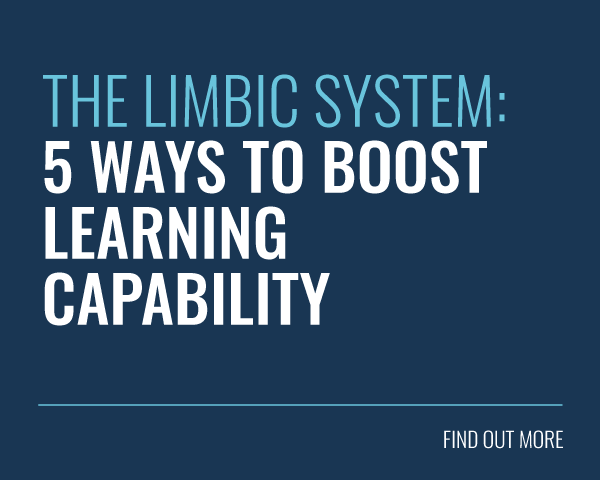 Learning makes the world a better place. Our capacity for learning improves access to valuable information and resources. It removes barriers to progress and allows us to embrace new opportunities. But learning isn’t always easy.
Learning makes the world a better place. Our capacity for learning improves access to valuable information and resources. It removes barriers to progress and allows us to embrace new opportunities. But learning isn’t always easy.
We all have to contend with an endless onslaught of distractions fighting for our time. This makes it difficult to prioritise our own professional or personal development. Finding the right learning techniques can be key to saving you time and helping you to get ahead.
Why spend 10 hours trying to master a topic, when you could do it in five? Over the course of this article, we will be exploring seven research-backed learning techniques that have proven to be effective. But first, let’s remind ourselves why these techniques are so important.
Why are Learning Techniques Important?
Think back to your experiences at school. Some students struggled to study effectively. For others it seemed to come easy. Unfortunately, little guidance is offered to young learners about effective learning techniques. This leads to wasted energy, frustrating results and negatively impacts our educational outcomes.
Confirmation bias can also be a problem here. Sometimes we perform well in tests despite ourselves. This can lead us to think we are reliant on ineffective or suboptimal learning techniques.
Things don’t improve when we grow up either. Generally speaking, we don’t receive further guidance unless we actively seek it out. As a result, the ineffective techniques we used when we were younger become deeply ingrained.
If you knew that reading and highlighting textbooks was an ineffective learning approach, would you still do it? Adapting your learning technique can transform you into a more efficient learner. This means you can start applying your knowledge quicker.
In a workplace context, this may result in an improved performance and more opportunities for growth. At the very least, it will mean that you have more time on your hands to spend on life’s other distractions.
Get in the Zone: Learning Best Practice
Before selecting a learning technique, there are some other considerations you should keep in mind. This is you setting the stage for success!
- Sleep well and keep fit.
- Turn off all unnecessary distractions.
- Vary your study locations.
- Find a good time for focused learning.
- Programme in time for breaks.
- Consume ‘brain food’ (fruit, nuts, dark chocolate, etc.).
- Listen to calming music.
Following this best practice advice will help you to get more out of the techniques listed below. Let’s dig in!
7 Brain Boosting Learning Techniques
Let’s jump straight into our list, presented in no particular order.
1. Spaced Practice
Our tendency to leave things to the last possible minute often results in burnt midnight oil, prolonged learning sessions and ineffective educational outcomes.
There’s a lot of research out there that tells us that cramming sessions just don’t work. The antithesis of this approach is spaced practice and it has been proven to be a lot more effective.
Put simply, spaced practice (or ‘spaced repetition’) is the process of reviewing material over a longer time period through multiple sessions.
By recalling information again and again, you transfer it from your short-term memory into your long-term memory. Eventually the recall process becomes almost automatic.
As such, spaced practice is a uniquely powerful weapon against that most dastardly of enemies: The Forgetting Curve.
2. Elaboration
Elaboration is a powerful learning technique. It’s based on the idea that new information tends to be stickier when we can connect it to what we already know.
You may know this from your own learning experiences. It’s harder to learn how to do basic coding, when you’ve never used a computer before.
Likewise, you may not be able to point to Windsor on a map of the United Kingdom. But if I tell you that it’s roughly thirty minutes outside of London on a westbound train, you should be able to find it in no time.
This is because you already understand concepts like ‘London’, ‘west’ and ‘thirty minutes’. By forging a connection between new material and existing knowledge, we start to transfer information into our long-term memory.
To kick-start this process, try asking simple ‘how’, ‘what’, ‘why’ questions. For instance, let’s pretend you are trying to remember when the Magna Carta was sealed. We know the answer to this question is 1215, because we looked it up.
But if we ask ourselves why the Magna Carta was sealed in 1215, we can begin to connect the event to other historical happenings that we may already be aware of. This interconnected framework of knowledge makes the memory recall process much smoother.
This method can be time-consuming, but it’s effective. If you’re aiming to achieve total mastery over a topic, elaboration could be just the learning technique for you.
3. Interleaving
Interleaving (aka. mixed practice) is the process of combining together different topics or forms of practice to aid the learning process. This approach contrasts with blocked learning, where focused learning happens on a single topic, or through a single form of practice.
It may seem counter intuitive, but interleaving is more effective because it’s harder than blocked learning. By embracing different cognitive processes and resolving the interference between them, you are working toward long-term retention and knowledge transfer.
Let’s say you’re learning to play the piano. If you take a blocked practice approach, you may start by getting to know the keyboard. Once you’ve mastered this, you could move on to learn about note values. Then you could start considering bars and tempo in practice.
However, with an interleaving approach, you wouldn’t wait until you had mastered each topic. You would alternate between all topics until you had the knowledge you required.
As you alternate between topics, you introduce spaced practice into your learning approach. This makes the recall process harder but more rewarding.
Cognitive psychologists also claim that interleaving helps the brain to differentiate between related concepts and ideas, thereby forming stronger memory associations. In other words, when done right, interleaving is a potent combination of both spaced practice and elaboration.
4. Concrete Examples
Rote memorisation can sometimes result in us temporarily remembering concepts or ideas that we cannot articulate in a meaningful way. As this information is not useful to us, it’s not sticky and it won’t get transferred into our long-term memory.
In order to remember abstract concepts, we must first be able to talk about them in real terms. This brings to mind Bloom’s Taxonomy. Understanding is one thing, but application is another.
Concrete examples is a learning technique that encourages students to apply their own examples to the subject matter at hand.
For example, let’s take an abstract term such as ‘mission statement’. We could memorise a definition for this term, but to truly understand it, we should combine this information with some real world examples.
- Nike: To bring inspiration and innovation to every athlete in the world.
- Tesla: To accelerate the world’s transition to sustainable energy.
- Growth Engineering: To wage war on dull online learning.
We love that last one! By reviewing these examples in line with the definition of the term, we can unlock a deeper learning experience. These complex thought patterns help to facilitate better educational outcomes.
So there you have it — don’t be wishy washy. Dig deep with your learning!
5. Dual Coding
Dual-coding theory is a theory of cognition that was first hypothesized by Allen Paivio in 1971. This theory tells us that it’s easier to transfer information into our long-term memory if it’s presented to us in both visual and verbal formats.
In other words, combining text and images is more effective than using text or imagery alone.
But that doesn’t mean you can slot a stock image into your learning materials and rest on your laurels. Any visuals incorporated into your learning approach should be meaningful. They should help you to forge a connection between the two different sets of information.
Paivio’s research and experimentation was able to show that imagery plays a vital role in cognitive operations. As such, excluding visual representations from our learning approaches would be deeply counter intuitive.
6. Practice Testing
Practice testing (aka. retrieval practice) is an instructional technique that integrates regular testing and quizzing into the learning process.
These tests should be low stakes. In other words, there should be no consequences for failing them. The tests simply identify gaps in knowledge and spot opportunities for further learning.
Practice testing can be supported by an instructor who provides questions or challenges, or configured by the learner themselves. In the latter case, the learner could create their own quiz questions or challenge themselves to recall certain sets of information.
There’s plenty of supporting research into practice testing. One study from 2008 showed that students who took a mock test performed significantly better in their final exam than those who did not (80% vs 36%).
It should also be noted that there are numerous studies that show that practice testing is even more effective when it incorporates feedback into the process.
7. Mind Mapping
We’ve already seen that presenting information visually has its benefits. Mind maps help to take this idea to the next level.
A mind map is a diagram for ‘representing tasks, words, concepts, or items linked to and arranged around a central concept or subject using a non-linear graphical layout’.
For instance, if you were to create a mind map for ‘effective learning techniques’, you’d start in the centre and add items and illustrations for the associated concepts (Spaced Practice, Elaboration, etc.).
You could then extend outwards (based on need) to include more information, benefits, risks and so on.
Whilst you may occasionally feel like a loose cannon detective with their own ‘crazy wall’, these mind maps hold real organisational power. They help you to visualise important concepts, communicate your ideas and explain how everything links together.
And it works too. A Johns Hopkins study has found that students who use mind maps can increase their grades by 12%.
Final Word
We all want to feel like we’re using our time wisely. Unfortunately, this is not always the case. Sometimes we perform the same mindless tasks and activities simply because they are what we are used to, not because they are particularly effective.
When it comes to learning, things are harder still. Little guidance is offered on this topic, despite the dire consequences that can be brought to bear as a result of ineffective learning techniques.
Luckily, there are research-backed learning techniques that have proven to be effective. When studying, you should experiment with these approaches to see which works best for you.
In the meantime, good luck and happy learning!
Want more? Here are seven learning techniques that you should avoid at all costs!
Growth Engineering Authoring Tool uses instructional design best practice to help you forge winning learning experiences. Sign-up for a 21-day free trial now to see it in action!









